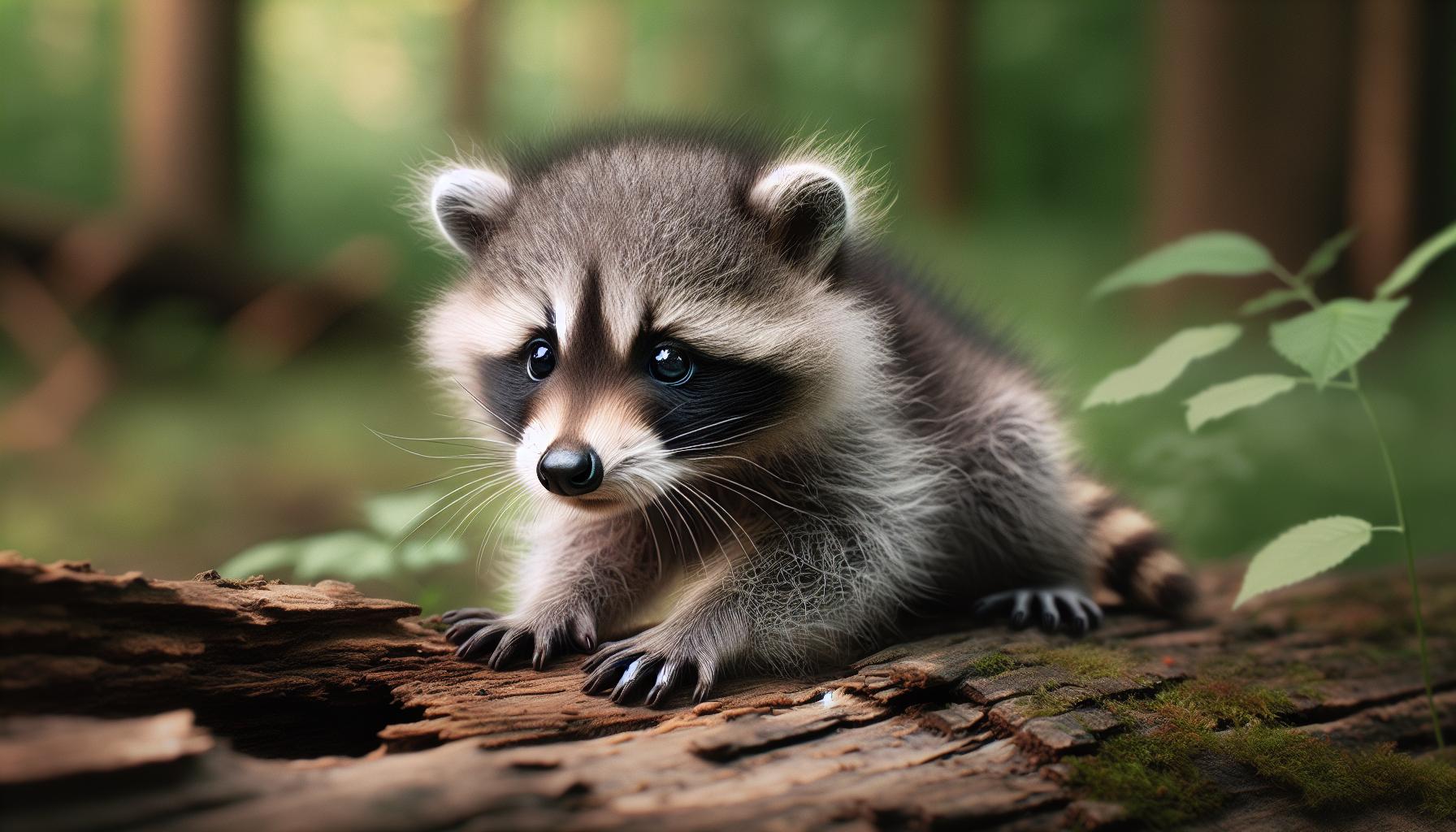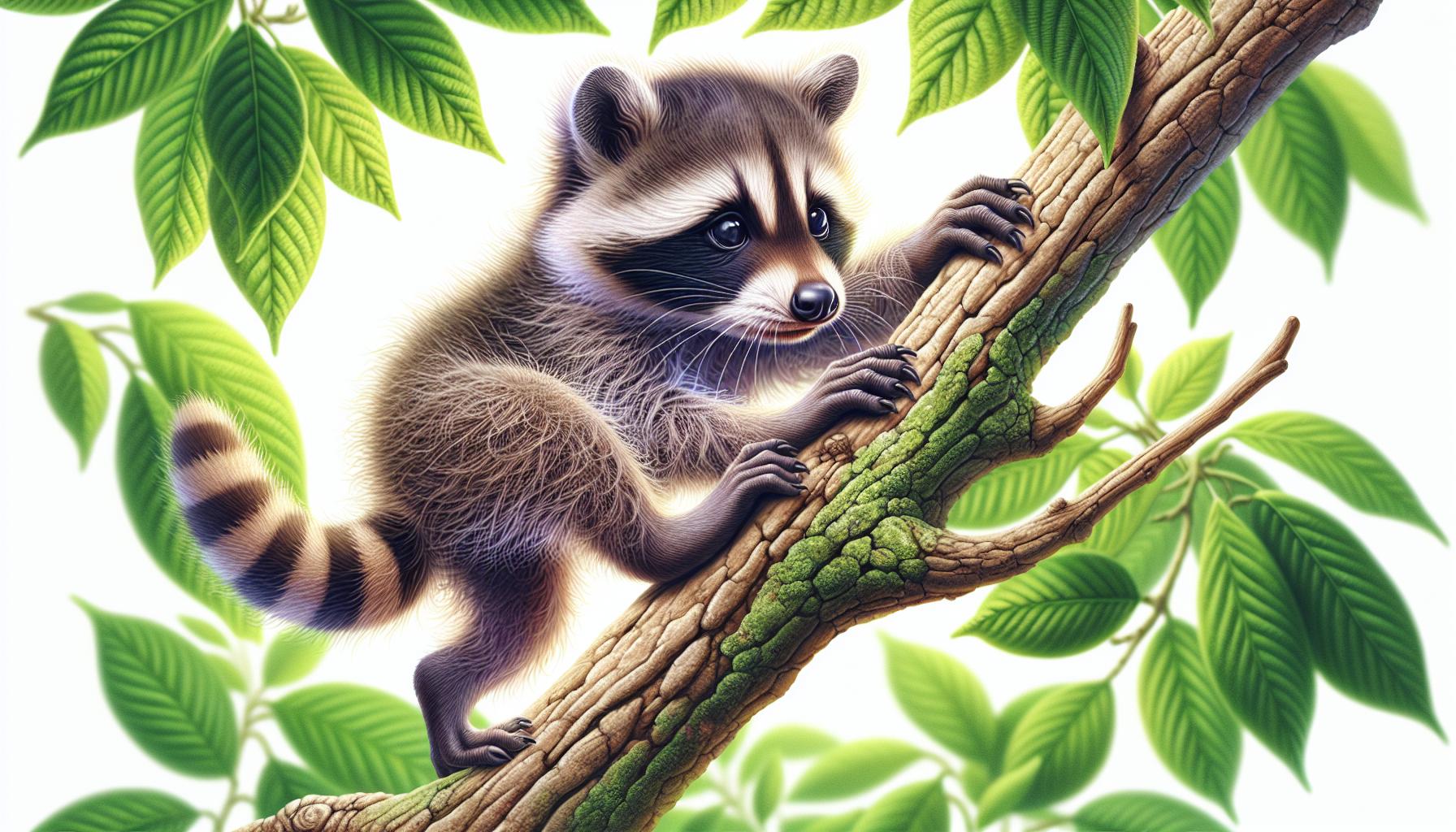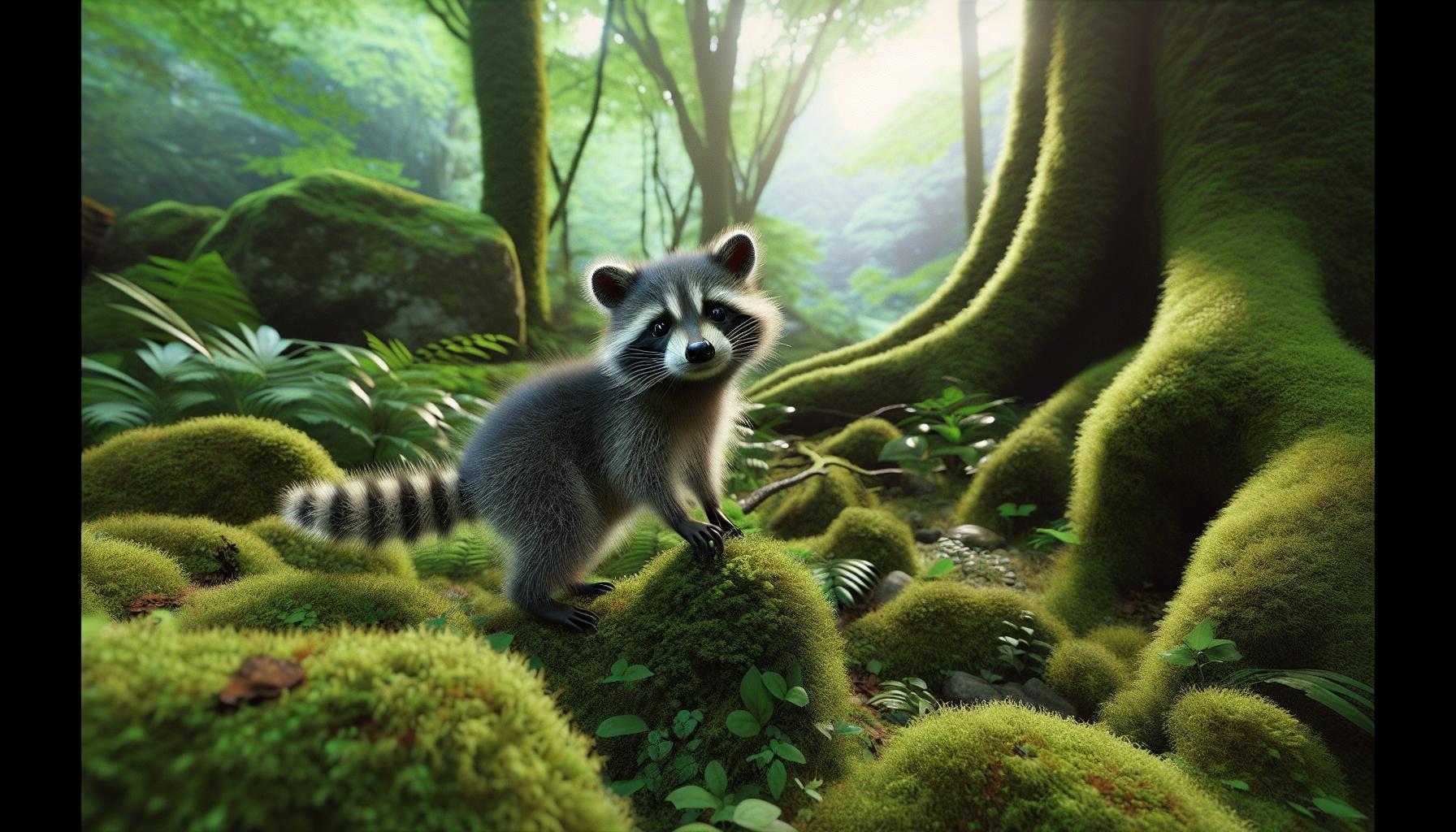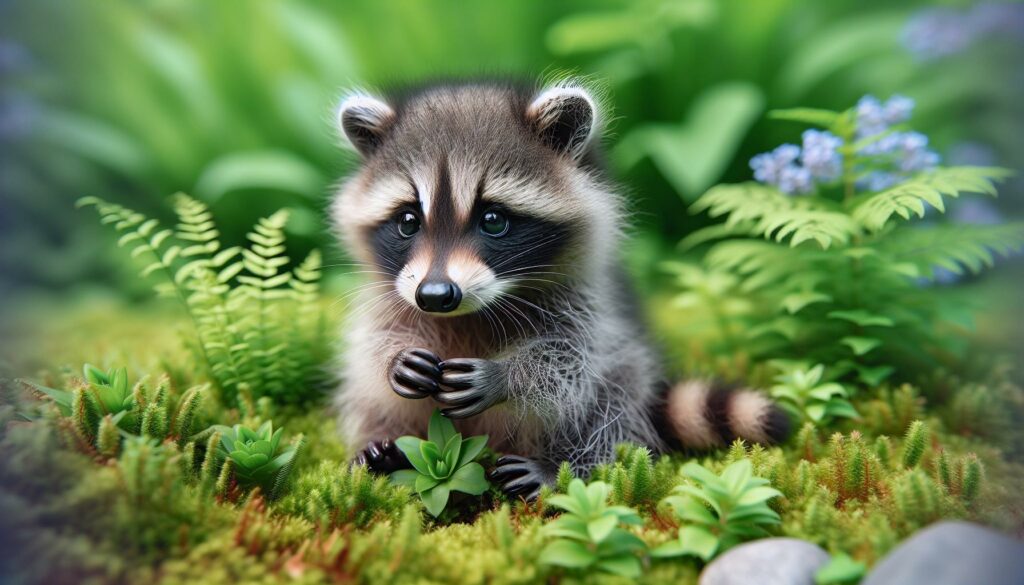Raccoons have always fascinated me with their playful antics and clever nature. Among the most adorable members of the raccoon family is the baby raccoon, a tiny bundle of curiosity and mischief. Watching these little creatures explore their surroundings is a delightful experience that captures the hearts of many.
- Unique Development: Baby raccoons, known as kits, weigh 3 to 5 ounces at birth and grow rapidly, reaching 1.5 to 3 pounds by 8 to 10 weeks.
- Playful Exploration: From around 6 to 8 weeks, kits begin to explore their environment, showcasing dexterity and curiosity through climbing and manipulating objects.
- Social Learning: Baby raccoons rely heavily on their mothers during the first 12 weeks, fostering strong social bonds while learning essential survival skills.
- Diverse Diet: As they mature, baby raccoons transition to a varied diet, including fruits and insects, significantly impacting their growth and adaptability.
- Distinct Characteristics: The iconic black “mask” and gray fur transitioning to black and gray contribute to their charm and provide effective camouflage in nature.
- Engaging Observations: Observing baby raccoons offers valuable insights into their playful behavior and learning processes, making them popular among wildlife enthusiasts.
Baby:ow_guu4ivp4= Racoon
Baby raccoons, also known as kits, exhibit distinctive features and behaviors that showcase their playful nature. They weigh approximately 3 to 5 ounces at birth, growing rapidly in their first few months. Their fur initially appears gray, developing into a mix of black and gray as they mature. The distinct black “mask” around their eyes appears soon after birth.
Social creatures, baby:ow_guu4ivp4= racoon rely heavily on their mothers during early development. Typically, a mother raccoon raises her kits in dens made in tree hollows or burrows. The nurturing phase lasts about 12 weeks, during which kits learn essential survival skills through play and interaction with their siblings.
Exploration fuels their curiosity. Baby raccoons begin venturing outside the den at around 6 to 8 weeks, using their nimble paws to grasp and manipulate objects. This dexterity allows them to discover food sources and test their environment. Their playful antics, such as climbing and swimming, enable them to develop coordination and strength.
Foraging behavior emerges as they approach maturity. Baby raccoons consume a varied diet of fruits, insects, and small animals. This omnivorous diet plays a crucial role in their growth, providing the necessary nutrients for their development. The shift from reliance on maternal milk to solid food occurs around 8 to 10 weeks, marking a significant milestone in their growth.
Observing baby:ow_guu4ivp4= racoon offers a delightful experience. Their curious and mischievous actions captivate many viewers, making them popular subjects for wildlife photography and videos. Their playful nature contributes to the overall charm that raccoons hold in the eyes of animal enthusiasts.
Features of Baby:ow_guu4ivp4= Racoon

Baby raccoons, or kits, possess unique characteristics that contribute to their charm and appeal. Their playful behavior and physical traits make them fascinating creatures to observe.
Design and Aesthetics
Baby raccoons feature distinct markings, including the iconic black “mask” around their eyes, which emerges shortly after birth. Their fur initially appears gray, gradually transitioning to a blend of black and gray as they develop. This coloration enhances their adorable appearance and provides effective camouflage in their natural habitat. Kits also exhibit a stocky body shape with rounded ears, making them look even cuter as they engage in playful antics.
Size and Dimensions
At birth, baby raccoons weigh approximately 3 to 5 ounces, making them relatively small. They grow rapidly, reaching about 1.5 to 3 pounds by the time they’re 8 to 10 weeks old. Their length ranges from 12 to 18 inches, including their tails, which can add another 6 to 10 inches. These dimensions support their playful nature, as their developing bodies allow for exploration and manipulation of objects, crucial for their learning process.
Performance Analysis

The performance of baby:ow_guu4ivp4= racoon showcases their adaptability and learning capabilities, crucial for their survival. Understanding their functionality and user experience enhances my appreciation for these remarkable creatures.
Functionality
Baby raccoons exhibit remarkable functionality during their early development stages. Their limbs, designed for climbing, allow them to navigate various environments efficiently. At around 6 to 8 weeks, their development includes mastering dexterity, enabling them to grip and manipulate food items. Their keen sense of touch, amplified by sensitive paws, aids in exploring their surroundings. This exploration contributes significantly to their learning process, fostering independence as they transition from reliance on maternal care to self-sufficiency.
| Age (Weeks) | Weight (Pounds) | Length (Inches) | Notable Skills |
|---|---|---|---|
| 0-4 | 0.2-0.5 | 6-10 | Nesting, suckling |
| 5-8 | 1.5-3 | 12-18 | Gripping, climbing, initial foraging |
| 9-12 | 3-5 | 18-24 | Enhanced foraging, social interactions |
User Experience
The user experience of observing baby raccoons is engaging and joyful. Their playful antics and social interactions provide entertainment and fascination. As they interact with each other and explore their environment, observers gain insight into their behavior and development. The varied diet they begin to explore around 8 to 10 weeks not only showcases their curiosity but also enhances their adaptability. Watching them navigate challenges inspires admiration, revealing a deeper understanding of wildlife dynamics.
Comparison with Similar Products

When comparing baby raccoons to similar wildlife species, several distinct features and behaviors come to light. Observing these adorable animals alongside other mammals highlights differences in social structure and adaptability.
- Fox Kits: Weighing around 1 to 2 pounds at birth, fox kits exhibit a more solitary nature compared to baby raccoons. While both are playful, raccoons engage more with siblings, fostering strong social bonds.
- Squirrels: Baby squirrels, or kits, weigh approximately 1 ounce at birth and mature quickly, becoming independent by 10 weeks. However, they lack the dexterity of baby raccoons, whose ability to use their paws for manipulation is exceptional.
- Opossums: Baby opossums are born the size of a peanut and crawl into their mother’s pouch. Unlike baby raccoons, opossums rely heavily on maternal care for a longer period, delaying their exploration of the environment.
Beyond physical size, the playful and inquisitive nature of baby raccoons sets them apart in the animal kingdom. Their remarkable learning capacity allows them to adapt to various environments, which aids in their survival. Raccoons thrive in diverse habitats, while competitors like squirrels prefer woodlands.
In terms of dietary exploration, baby raccoons show a significant adaptability to different food sources, transitioning from milk to solids at around 8 to 10 weeks. Comparatively, baby foxes primarily consume their mother’s regurgitated food for a longer period.
Overall, the charm of baby raccoons elevates them in wildlife enthusiasts’ eyes, showcasing their unique behaviors that captivate observers. Whether exploring habitats or engaging in playful antics, baby raccoons continue to stand out among similar wildlife species.
Watching baby raccoons grow is truly a delightful experience. Their playful nature and curiosity bring joy to anyone lucky enough to observe them. I find their social interactions and learning processes fascinating as they develop essential skills through play.
These adorable kits not only showcase remarkable adaptability but also possess unique traits that set them apart from other wildlife species. Their charm and antics make them a favorite among animal lovers and wildlife photographers alike.
As I continue to appreciate these captivating creatures, I’m reminded of the beauty of nature and the joy it brings to our lives. Baby raccoons are a perfect example of how wildlife can inspire admiration and wonder.

